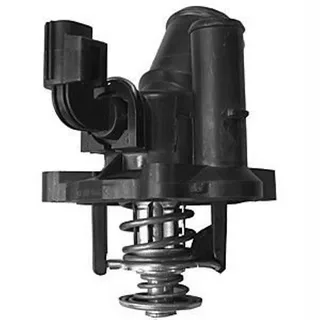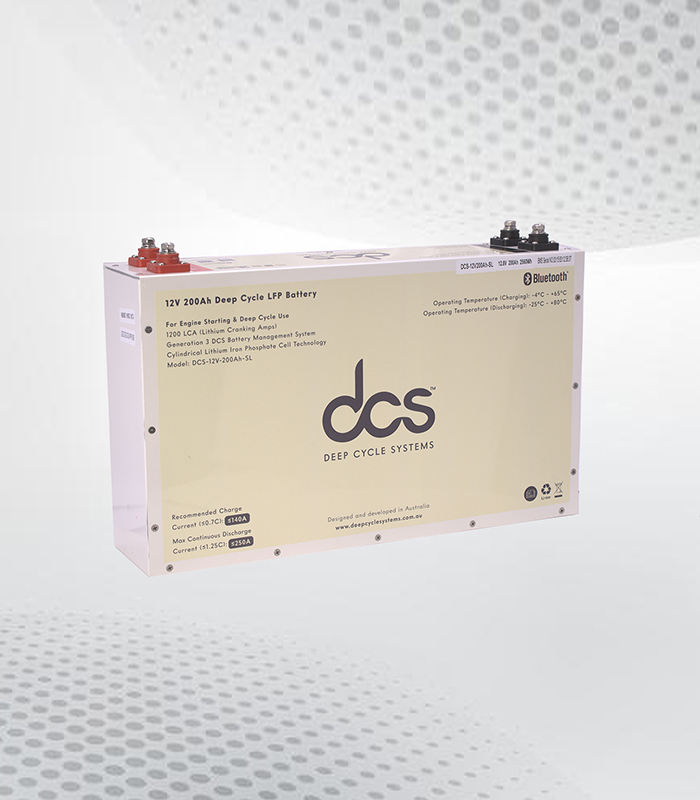Regarding your Ford Mondeo, every component plays a vital role in keeping your vehicle running smoothly. One often overlooked part is the thermostat housing. While it may not be as flashy as other components, its function is critical to your engine’s health and performance. Understanding how the Mondeo thermostat housing works can save you from costly repairs and help maintain optimal driving conditions. In this comprehensive guide, we’ll delve into everything you need to know about this essential part—from its importance and common signs of failure to maintenance tips that ensure longevity. Let’s dive in!
What is the Thermostat Housing?
The thermostat housing is a crucial component in your vehicle’s cooling system. It acts as the protective casing that houses the thermostat, regulating engine temperature. This small yet significant part ensures that coolant flows appropriately throughout the engine.
Located between the radiator and engine block, the thermostat controls coolant circulation. When the engine reaches a certain temperature, the thermostat opens or closes based on this regulation. This helps maintain optimal operating temperatures for various driving conditions.
Made from durable materials like plastic or aluminium, the thermostat housing must withstand heat and pressure over time. Its design connects seamlessly with hoses and pipes that direct coolant flow.
Proper functioning of the thermostat housing in a Mondeo directly impacts overall performance and efficiency. A well-maintained unit contributes to better fuel economy while preventing overheating issues.
Understanding what this component does can help you appreciate its importance in keeping your Ford Mondeo running smoothly. Regular inspections will ensure it remains in good condition for many miles ahead.
Importance of the Thermostat Housing in a Mondeo
The thermostat housing plays a crucial role in the overall performance of your Ford Mondeo. It is an integral component that houses the thermostat, regulating engine temperature by controlling coolant flow. This ensures that your engine operates at optimal temperature, which is vital for efficiency and longevity.
Proper functioning of the thermostat housing helps maintain consistent engine temperatures. If it fails or becomes damaged, it can lead to overheating or underheating issues. Both scenarios can result in severe damage to internal components over time.
A well-maintained thermostat housing protects the engine from excessive heat and contributes to fuel economy. An efficient cooling system allows for better combustion processes and minimizes wasted energy, ultimately saving you money on fuel costs.
Moreover, this component aids in preventing corrosion within the cooling system. A functional thermostat housing keeps coolant circulating correctly, reducing stagnation and helping protect metal surfaces from rust and other destructive elements.
Routine maintenance should include regular inspection of your Mondeo’s thermostat housing. Identifying potential issues early can prevent costly repairs down the line while ensuring smooth operation as you drive.
Common Signs of a Faulty Thermostat Housing
A faulty thermostat housing can lead to several noticeable issues with your Mondeo. One of the first signs is coolant leaks. If you spot puddles of fluid under your vehicle, it might indicate a compromised housing unit.
Another common symptom is engine overheating. The thermostat housing plays a crucial role in regulating engine temperature. If it fails, you may notice the temperature gauge climbing higher than usual during drives.
Pay attention to fluctuating temperatures as well. A malfunctioning thermostat can cause erratic shifts between hot and cold readings on your dashboard display. This inconsistency often suggests that the housing isn’t functioning correctly.
You might also experience poor heating or cooling performance inside your car. When the thermostat doesn’t open or close correctly, cabin temperatures will not be optimal, making for an uncomfortable ride regardless of weather conditions outside.
Keep an ear out for unusual sounds from the engine bay. Gurgling or bubbling noises could signify trapped air due to improper coolant flow from a faulty thermostat housing, indicating that further investigation is necessary to avoid more significant issues.
How the Mondeo Thermostat Housing Works
The Mondeo thermostat housing plays a crucial role in managing engine temperature. It is a junction between the engine and the cooling system, regulating coolant flow based on heat levels. When the engine starts, it is cold, and the thermostat remains closed to allow rapid heating.
As temperatures rise, the thermostat opens, enabling coolant from the radiator to circulate through the engine block. The goal is maintaining an optimal operating temperature for efficient performance and fuel economy. A properly functioning thermostat housing ensures that this process occurs seamlessly.
Inside this component are several key features designed for efficiency. The housing is typically made of durable plastic or metal, providing resistance against high temperatures and pressure changes. Additionally, integrated sensors monitor fluid flow and temperature variations.
When everything works correctly, your Mondeo runs smoothly without overheating or experiencing sudden temperature drops. However, the thermostat housing malfunctions can lead to serious issues such as overheating or coolant leaks.
Understanding this mechanism helps you appreciate its importance during routine maintenance checks or repairs on your Ford Mondeo’s cooling system.
Components of the Ford Mondeo Thermostat Housing
The Ford Mondeo thermostat housing comprises several essential components, each critical to engine temperature regulation. The housing is usually made of durable plastic or aluminium, designed to withstand high temperatures and pressures.
Inside the housing resides the thermostat. This small but vital component opens and closes based on coolant temperature. When the engine heats up, coolant flows into the radiator. Conversely, when cold, it restricts this flow to help maintain optimal operating temperatures.
Another key element is the gasket that seals the connection between the thermostat housing and the engine block. An adequately fitted gasket prevents leaks and ensures efficient operation of both parts. If this gasket wears down or fails, you may experience coolant leaks.
Additionally, sensors often integrated into or around the thermostat housing monitor coolant temperature and pressure readings. These sensors send information to your vehicle’s onboard computer system for accurate performance monitoring.
Some models may have an integrated bypass valve. This valve redirects coolant flow during specific conditions, aiding in quicker warm-ups during colder weather while maintaining overall efficiency.
Causes of Thermostat Housing Failure
Age-Related Wear and Tear Leading to Deterioration
Over time, prolonged exposure to heat and coolant causes the thermostat housing materials in the Mondeo to degrade. This natural wear and tear can result in cracks or leaks that compromise the component’s overall performance.
Overheating’s Impact on Thermostat Housing Integrity
When the engine operates at higher-than-normal temperatures, immense pressure is placed on the thermostat housing. Persistent overheating may warp or damage the housing structure, leading to engine performance failures.
Corrosion from Insufficient Coolant Maintenance
Coolant additives prevent corrosion but can lose effectiveness if not replaced regularly. Contaminants and rust can accumulate within the system, attacking the thermostat housing and accelerating its deterioration.
Improper Installation Causing Misalignment and Leaks
A poorly installed thermostat housing, particularly during replacements or repairs, increases the likelihood of leaks. Misaligned seals or improper fittings undermine the housing’s functionality, requiring additional corrective measures.
Risks Associated With Substandard Replacement Parts
Using low-quality replacement parts instead of genuine Ford components increases the risk of failure. Cheaper parts are often less durable, making them prone to breaking under stress or temperature fluctuations in the engine system.
By addressing these potential issues early and ensuring proper maintenance and part quality, vehicle owners can significantly reduce the risk of thermostat housing failure in their Mondeo.
Replacing the Thermostat Housing in a Mondeo
Replacing the thermostat housing in a Mondeo can seem daunting, but it’s manageable with the right tools and steps. First, ensure your engine is cool to avoid burns or injuries. Then, locate the thermostat housing, usually near the engine block.
Next, drain some coolant from your radiator to prevent spills when you remove the housing. Use a container to catch any fluid leaking during this process. Carefully disconnect any hoses attached to the thermostat housing—using pliers can help if they’re tight.
With all connections removed, unscrew the bolts holding the thermostat housing in place and gently lift it off. Clean old gasket material from both surfaces before placing a new one on the replacement unit. This ensures a proper seal for optimal performance.
Install your new thermostat housing by reversing these steps: position it back onto its mounting point and tighten it down securely without over-torquing. Reattach all hoses firmly and refill your cooling system with fresh coolant.
After replacing everything, start your engine and monitor for leaks while allowing it to reach operating temperature. Make sure everything functions correctly before hitting the road again.
How to Maintain the Mondeo Thermostat Housing
Regular maintenance of the Mondeo thermostat housing is essential for optimal engine performance. Start by inspecting the housing for signs of wear or leaks. A visual check can often reveal cracks or damage that might lead to coolant loss.
Ensure the coolant levels are adequate and you’re using the correct type Ford recommends. Over time, old coolant can cause corrosion inside the thermostat housing, leading to potential failures. Flushing your cooling system every few years helps keep everything clean and functioning well.
Another key aspect is checking hose connections around the thermostat housing. Make sure all hoses are tightly secured and free from kinks or blockages. Loose hoses can affect temperature regulation, which may strain your engine.
Pay attention to temperature readings on your dashboard as well. If you notice erratic fluctuations in temperature, it might indicate a problem with your thermostat housing or another part of your cooling system.
Consult a professional mechanic if you’re unsure about any issues related to the thermostat housing. Timely intervention can prevent costly repairs down the road while ensuring the smooth operation of your Mondeo’s engine.
Conclusion
Understanding the Mondeo thermostat housing is crucial for any car owner who wants to maintain their vehicle’s performance. It plays a vital role in regulating engine temperature, ensuring optimal functioning. Regular maintenance and timely replacements are key to avoiding problems associated with this component. Keeping an eye on fluid leaks or unusual temperature readings helps catch issues before they escalate. Investing time in understanding how your Mondeo’s thermostat housing works will empower you as a driver. Knowledge is essential for making informed decisions regarding repairs and upkeep.
FAQs
1. What is a thermostat housing?
The thermostat housing is a component that encases the thermostat and allows coolant to flow through when necessary, helping regulate engine temperatures effectively.
2. How often should I replace my Mondeo’s thermostat housing?
It’s advisable to inspect the thermostat housing during regular maintenance checks and consider replacement every 60,000-100,000 miles or if any signs of wear appear.
3. What are common signs of a faulty thermostat housing?
Common indicators include coolant leaks under your car, fluctuating engine temperatures on your dashboard gauge, or an overheating engine.
4. Can I drive my Mondeo with a faulty thermostat housing?
While driving short distances with minor issues is possible, continuing to operate the vehicle could cause severe damage due to overheating or coolant loss.
5. How can I prevent issues with my Mondeo’s thermostat housing?
Regular maintenance checks and promptly addressing leaks or other symptoms will help ensure your thermometer remains effective and prevent further complications.
Related Business Listings
Contact Directory
Local Business Profiles
Understanding the Mondeo Thermostat Housing: A Guide




